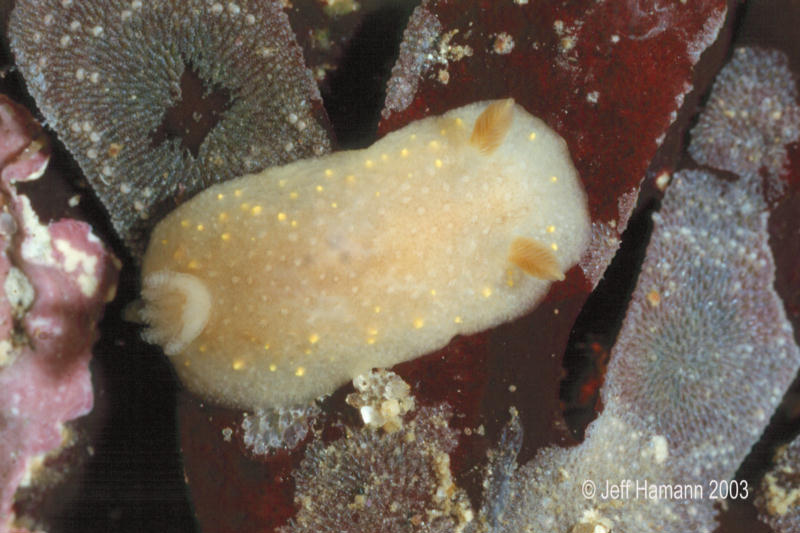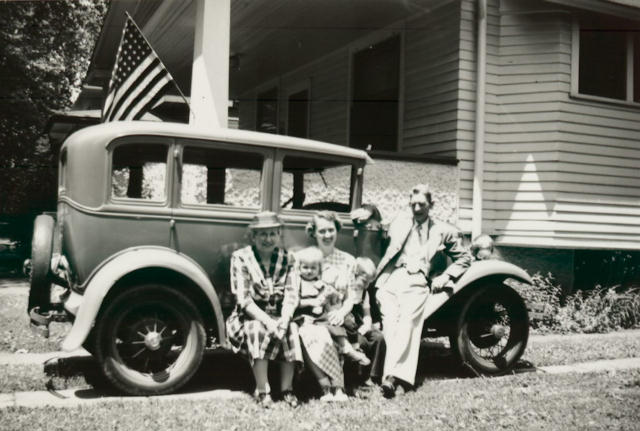 |
Cadlina modesta
Photo courtesy of Jeff Hamann
Cadlina modesta MacFarland, 1966
Continuing our series on the eastern Pacific species of the genus Cadlina , this week we present the relatively rare, primarily intertidal Cadlina modesta. I will always have a special place in my "biological sensitivity" for this species, because it was the topic of my third scientific publication (Bertsch, 1969).
We know a lot more about it than when it was described by MacFarland (1966), and my note on its occurrence at Moss Beach, California. Those were the days when we were long-haired undergraduates and fanatic youngsters overturning rocks along the central California coastline, from Jim Lance's La Jolla sites, to Steve Long's and Richard Roller's San Luis Obispo County sites, to northern San Mateo County. Obviously, the connection between an alga species is not of prey importance, but it might have helped understand the intertidal zonation pattern where the species had been found.
Today, through the work of McDonald & Nybakken (1978), and especially Goddard (1984 and 1998), we know that Cadlina modesta feeds exclusively on the dendroceratid sponges Aplysilla glacialis and Halisarca sp. Indeed, three other species of eastern Pacific cadlinids also have a feeding preference for Aplysilla glacialis: Cadlina sparsa, Cadlina flavomaculata, and Cadlina luteomarginata. The first two species I have recently discussed in the Nudibranch of the Week, the latter will be the week after the posting of Cadlina modesta. This "modest cadlinid" (please note that the Latin word modestus , -a, -um means "moderate, keeping within bounds, orderly, restrained, unassuming," certainly none of which apply to those who study them!) ranges from Point Lena, Alaska (Lee and Foster, 1985) to La Jolla, California (MacFarland, 1966).
It is humbly identified by its "low-key" markings: a light yellowish body coloration, with fainter yellow-white branchial plumes, and a series of small, bright yellow dots around the mid-lateral portion of the dorsum (see Behrens, 1991). Radular illustrations and formulae are presented in MacFarland, 1966, and McDonald, 1983 (in which can also be found a fairly complete bibliography of references to this species to the date of publication of the ms.)
I am most pleased and honored to present this species using the photograph of my friend and colleague Jeff Hamann. He has been interested in, photographed and studied nudibranchs in various seas for many years. Thank you, Jeff , for letting me use your excellent photograph.
Literature Cited
Behrens, David. 1991. Pacific coast nudibranchs. Sea Challengers, Monterey. 107 pp.
Bertsch, Hans. 1969. A note on the range of Cadlina modesta : a range extension, with notes on habitat and a color variation. The Veliger 12 (2): 231-232.
Goddard, Jeffrey H.R. 1984. The opisthobranchs of Cape Arago, Oregon, with notes on their biology and a summary of benthic opisthobranchs known from Oregon. Veliger 27 (2) 143-163.
-----. 1998. A summary of the prey of nudibranch molluscs from Cape Arago, Oregon. Opisthobranch Newsletter 24 (2): 11-14.
Lee, R.S., and Nora Foster. 1985. A distributional list with range extensions of the opisthobranch gastropods of Alaska. Veliger 27 (4): 440-448.
MacFarland, Frank Mace. 1966. Studies of Opisthobranchiate mollusks of the Pacific coast of North America. Mem. California Academy of Sciences 6: 1-546 pp.
McDonald, Gary R. 1983. A review of the nudibranchs of the California coast. Malacologia 24 (1-2): 114-276.
McDonald, Gary R., and J. Nybakken. 1978. Additional notes on the food of some California nudibranchs with a summary of known food habits of California species. Veliger 21 (1): 110-118.
192 Imperial Beach Blvd. #A
Imperial Beach, Calif
Jun. 2003
Taxonomic Information and Photos Courtesy of Dr. Hans Bertsch
College of Oceaneering, 3580 Aero Court, San Diego, CA 92123

You can drop Hans a note at hansmarvida@cox.net
|
